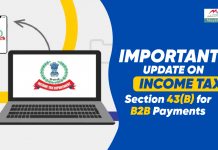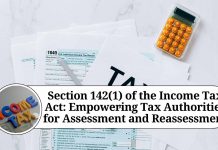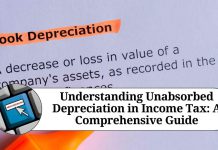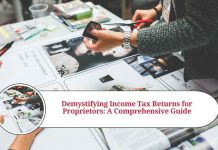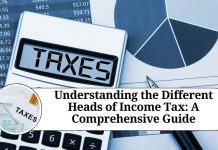Section 80CCD of the Income Tax Act 2015: Understanding the Basics
Section 80CCD is a provision of the Income Tax Act, 2015 that allows taxpayers to claim a deduction on contributions made towards certain pension schemes. This section is divided into two parts – Section 80CCD(1) and Section 80CCD(2). In this blog, we will explore the basics of Section 80CCD and understand how it works.
Section 80CCD(1)
Under Section 80CCD(1), an individual can claim a deduction on contributions made towards the National Pension System (NPS) or any other notified pension scheme. The maximum deduction allowed under this section is 10% of the individual’s salary (for salaried individuals) or gross total income (for self-employed individuals). Additionally, the overall deduction under Section 80C, 80CCC and 80CCD(1) cannot exceed INR 1.5 lakhs.
Section 80CCD(2)
Under Section 80CCD(2), an individual can claim an additional deduction on contributions made by their employer towards the individual’s NPS account. This deduction is available only to employees and is capped at 10% of their salary (basic salary + Dearness Allowance) or gross total income, whichever is lower. There is no upper limit on this deduction.
Eligibility criteria
To be eligible for deductions under Section 80CCD, the following conditions must be met:
- The individual must be a taxpayer in India.
- The contributions must be made towards the National Pension System (NPS) or any other notified pension scheme.
- The maximum deduction allowed under Section 80CCD(1) is 10% of the individual’s salary or gross total income, subject to a maximum of INR 1.5 lakhs.
- The maximum deduction allowed under Section 80CCD(2) is 10% of the employee’s salary (basic salary + Dearness Allowance) or gross total income, whichever is lower.
Tax benefits
Contributions made towards the National Pension System (NPS) or any other notified pension scheme are eligible for tax benefits under Section 80CCD. The tax benefits are as follows:
- The maximum deduction allowed under Section 80CCD(1) is 10% of the individual’s salary or gross total income, subject to a maximum of INR 1.5 lakhs.
- The maximum deduction allowed under Section 80CCD(2) is 10% of the employee’s salary (basic salary + Dearness Allowance) or gross total income, whichever is lower.
- The overall deduction under Section 80C, 80CCC and 80CCD(1) cannot exceed INR 1.5 lakhs.
Benefits of Investing in the National Pension System (NPS)
The National Pension System (NPS) is a popular investment option for individuals looking to save for their retirement. It is a government-backed pension scheme that is open to all citizens of India. Here are some benefits of investing in the NPS:
- Tax benefits: Contributions made towards the NPS are eligible for tax benefits under Section 80CCD of the Income Tax Act, 2015. As mentioned earlier, individuals can claim a deduction of up to 10% of their salary or gross total income, subject to a maximum of INR 1.5 lakhs. Additionally, the NPS offers tax benefits on maturity and partial withdrawals.
- Low cost: The NPS is a low-cost investment option compared to other pension schemes. The fund management fee charged by the NPS is only 0.01% of the assets under management (AUM).
- Flexibility: The NPS offers flexibility in terms of investment options and fund managers. Individuals can choose from various investment options, including equity, corporate bonds, and government securities. Additionally, they can switch between fund managers as per their preference.
- Retirement corpus: The NPS provides individuals with a retirement corpus that they can use to fund their retirement. The corpus can be withdrawn as a lump sum or as an annuity, depending on the individual’s preference.
- Portability: The NPS is a portable investment option. Individuals can continue with the same account even if they change their job or location.
Apart from the basic information on Section 80CCD, there are some additional details that individuals should be aware of. Here are some important points to note:
- Tier I and Tier II accounts: The National Pension System (NPS) has two types of accounts – Tier I and Tier II. Contributions made to the Tier I account are eligible for tax benefits under Section 80CCD, while contributions made to the Tier II account do not qualify for tax benefits.
- Lock-in period: Contributions made to the Tier I account of the NPS have a lock-in period until the individual reaches the age of 60. Partial withdrawals are allowed before the age of 60, subject to certain conditions.
- Annuity purchase: Individuals must use at least 40% of the retirement corpus to purchase an annuity upon retirement. The remaining 60% can be withdrawn as a lump sum or used to purchase an additional annuity.
- Employer contribution: Employers can contribute to the Tier I account of their employees under Section 80CCD(2). This contribution is tax-free for the employee and tax-deductible for the employer.
- Voluntary contributions: Apart from mandatory contributions, individuals can also make voluntary contributions to their NPS account. These contributions are eligible for tax benefits under Section 80CCD(1B), which allows for an additional deduction of up to INR 50,000 per annum.
Conclusion
Section 80CCD of the Income Tax Act, 2015 provides tax benefits to individuals who contribute towards the National Pension System (NPS) or any other notified pension scheme. The deductions available under this section are subject to certain conditions and limitations. By investing in a pension scheme, individuals can not only save for their retirement but also avail tax benefits under Section 80CCD.
Read more useful content:
- section 234e of income tax act
- section 286 of income tax act
- section 90a of income tax act
- section 40a(7) of income tax act
- section 226(3) of income tax act
- section 24 of income tax act
Frequently Asked Questions (FAQs)
Who is eligible to claim a deduction under Section 80CCD?
A: Any individual who has contributed towards the National Pension System (NPS) or any other notified pension scheme is eligible to claim a deduction under Section 80CCD.
What is the maximum amount that can be claimed as a deduction under Section 80CCD?
A: Individuals can claim a deduction of up to 10% of their salary or gross total income, subject to a maximum of INR 1.5 lakhs.
Are contributions made to the Tier II account of the NPS eligible for tax benefits under Section 80CCD?
A: No, contributions made to the Tier II account of the NPS do not qualify for tax benefits under Section 80CCD.
Can employers contribute to their employees’ NPS account under Section 80CCD?
A: Yes, employers can contribute to their employees’ Tier I account of the NPS under Section 80CCD(2). This contribution is tax-free for the employee and tax-deductible for the employer.
Is there a lock-in period for contributions made towards the NPS?
A: Yes, contributions made to the Tier I account of the NPS have a lock-in period until the individual reaches the age of 60.
Can individuals make voluntary contributions to their NPS account?
A: Yes, individuals can make voluntary contributions to their NPS account. These contributions are eligible for tax benefits under Section 80CCD(1B).
What happens to the retirement corpus upon retirement?
A: Individuals must use at least 40% of the retirement corpus to purchase an annuity upon retirement. The remaining 60% can be withdrawn as a lump sum or used to purchase an additional annuity.
Is the NPS a portable investment option?
A: Yes, the NPS is a portable investment option. Individuals can continue with the same account even if they change their job or location.
Can individuals switch between fund managers under the NPS?
A: Yes, individuals can switch between fund managers as per their preference under the NPS.
What are the investment options available under the NPS?
A: The NPS offers various investment options, including equity, corporate bonds, and government securities. Individuals can choose the investment option that best suits their investment goals and risk appetite.











